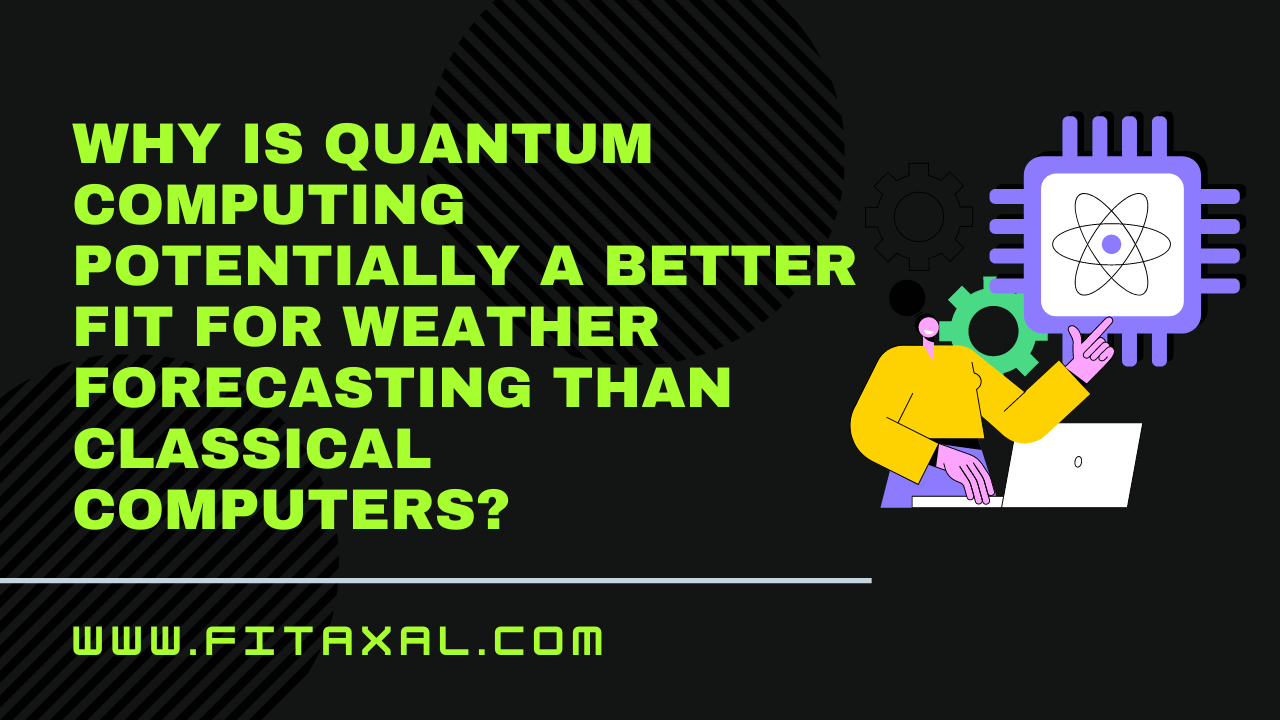The unpredictable nature of the weather has always been a challenge for humanity. However, with the advent of quantum computing, there’s renewed hope and unparalleled potential for the field of meteorology. This breakthrough technology offers promise not only for better weather predictions but also for the broader understanding of our climate.
How does quantum computing improve weather forecasting?
Traditional computing, while revolutionary in its time, has its limitations, especially when dealing with the intricate dance of atmospheric variables. Enter quantum computing. Quantum systems leverage the strange properties of quantum mechanics, namely quantum superposition and quantum parallelism, to compute vast amounts of data simultaneously. This allows quantum computers to process the vast and complex data sets inherent in weather prediction at unprecedented speeds.
Quantum algorithms for weather prediction
At the core of this quantum revolution are specially designed quantum algorithms. These algorithms are capable of analyzing extensive atmospheric data, understanding intricate patterns, and delivering forecasts faster and more accurately than classical models.
Quantum-enhanced weather models
Quantum-enabled weather modeling has another ace up its sleeve – precision. The inherent capabilities of quantum mechanics, like quantum coherence, mean these models are more refined and accurate, even when predicting extreme weather phenomena.
Quantum simulation for weather forecasting
Weather forecasting isn’t just about prediction; it’s about simulation. Here, quantum computers shine brightly. With quantum simulations in atmospheric science, researchers can create more realistic models of atmospheric conditions, providing a clearer window into potential future scenarios.
The Quantum Edge: Speed and Complexity
Another feather in quantum computing’s cap is its sheer speed. Quantum computing speed for weather simulations is unparalleled. It’s like comparing a jet plane to a bicycle. This rapid processing means meteorologists get data in real-time, making it easier to issue timely warnings.
Quantum technology in atmospheric research
It’s not just about the now. It’s about the future. Quantum computing’s potential extends beyond immediate forecasts into climate modeling, offering insights into long-term climate changes. Quantum mechanics for accurate weather forecasts means we’re not only predicting tomorrow’s rain but understanding the decades-long patterns and shifts.
Real-world Quantum Breakthroughs
Examples abound of quantum computing in meteorology. Leading meteorological organizations have started piloting quantum solutions for accurate weather predictions. The results? Faster, more accurate predictions that are invaluable for sectors like agriculture, aviation, and public safety.
Challenges and Opportunities
Of course, no technology is without its challenges. While quantum computing offers unparalleled advantages, it’s still in a developmental phase. Integrating it with current meteorological systems and ensuring consistent results are current research areas.
Quantum Mechanics and Its Potential in Atmospheric Research
Weather forecasting, while rooted in science, has often been likened to an art, given its inherent unpredictability. The myriad variables at play – from temperature fluctuations, humidity levels, and atmospheric pressure, to wind patterns and beyond – have always been a puzzle that classical computers approach linearly. Quantum computing, with its potential for non-linear problem-solving, is a game-changer in this domain.
Quantum Superposition in Atmospheric Science
The principle of quantum superposition, where quantum systems exist in multiple states simultaneously, is especially promising for weather forecasting. Classical computers operate using bits that are either in a state of 0 or 1. Quantum bits or qubits, however, can exist in a superposition of both. This means they can process a vast amount of information at once.
In terms of weather forecasting, imagine the advantage of calculating all possible outcomes of a storm’s path simultaneously, rather than one at a time. The accuracy and speed at which predictions could be made are significantly enhanced.
Quantum Parallelism in Meteorology
Quantum parallelism extends the potential of quantum computing by allowing many computations to be performed concurrently. When predicting weather patterns, especially in turbulent regions, quantum parallelism provides meteorologists with the ability to run multiple simulations concurrently, understanding various outcomes and refining predictions in real-time.
Quantum Data Analysis for Weather Forecasting
Weather forecasting requires analyzing vast amounts of data. From satellite imagery to ground-based observations, the amount of data is truly staggering. Quantum data analysis can sift through this mountain of information quickly and efficiently, identifying patterns and anomalies faster than classical methods, ensuring more timely and accurate forecasts.
Quantum-enabled Solutions for Complex Climate Models
Climate modeling is inherently more complex than short-term weather prediction. It involves long-term patterns, taking into account variables over extended periods. Quantum solutions for accurate weather predictions in the short term can be extrapolated to provide insights into long-term climate models, offering a clearer understanding of climate change and its implications.
Quantum Algorithms for Large-scale Data Analysis in Weather Forecasting
Weather forecasting isn’t just about processing current data. It’s also about learning from the past. With quantum algorithms designed specifically for weather simulations, meteorologists can delve into historical data, understanding past weather patterns, and refining future predictions.
The Future of Quantum and Meteorology
The marriage of quantum computing and meteorology is still in its infancy. However, the initial results are more than promising. As quantum technology advances and becomes more accessible, it’s plausible to foresee a future where our understanding and prediction of weather patterns reach unprecedented accuracy.
Organizations, especially those in the public sector, would do well to invest in this technology, ensuring safety, better resource management, and overall improved quality of life for people worldwide.
In essence, quantum computing isn’t just a leap forward for meteorology; it’s a quantum leap, promising a brighter, clearer, and more predictable future.
Frequently Asked Questions
Are there quantum-based models for meteorology?
Yes, researchers are continually developing quantum-based models to enhance accuracy and prediction speeds.
What role does quantum data analysis play in weather forecasting?
Quantum data analysis allows for the rapid processing of vast amounts of meteorological data, leading to quicker and more accurate predictions.
Are meteorological organizations using quantum technology for predictions?
While still in the early stages, many organizations are experimenting with quantum technology to enhance their forecasting capabilities.
How might quantum computing reshape the future of atmospheric science?
With its potential for speed and accuracy, quantum computing could revolutionize atmospheric research, providing deeper insights into climate change and long-term weather patterns.
Also Read: What is Meant by Applied Quantum Computing? (All You Need to Know)
In conclusion
the promise of quantum computing in the realm of meteorology is vast. As this technology matures, we can expect a future where weather forecasts are not only faster but significantly more accurate, benefiting society in myriad ways.
In wrapping up this article, we aspire to have given you a comprehensive understanding of “Why is Quantum Computing Potentially a Better Fit for Weather Forecasting than Classical Computers?” and its implications, arming you with the knowledge necessary to navigate this area successfully.





